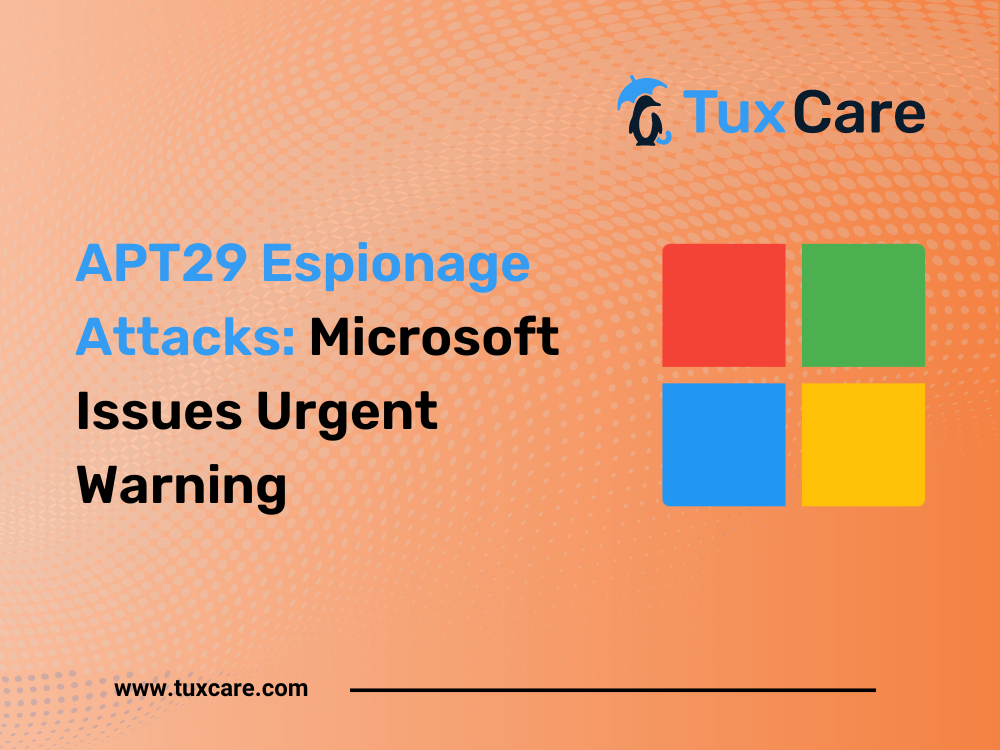APT29 Espionage Attacks: Microsoft Issues Urgent Warning
In a recent announcement, Microsoft issued a warning regarding the increasing activities of APT29, a Russian state-sponsored cyber threat group. This group, notorious for its involvement in espionage attacks on Microsoft‘s systems in November 2023, has now expanded its targets, prompting Microsoft to initiate notifications to potentially affected organizations. In this blog post, we delve into the concerning trend of APT29 Espionage Attacks, examining Microsoft’s recent warning and offering insights into mitigating the escalating cyber threat landscape.
Expanding Target Range
The revelation follows a disclosure by Hewlett Packard Enterprise (HPE), revealing that it fell victim to an attack orchestrated by APT29, also known as BlueBravo, Cloaked Ursa, Cozy Bear, Midnight Blizzard, and The Dukes.
Microsoft’s Threat Intelligence team highlighted that APT29 primarily focuses on governmental bodies, diplomatic entities, non-governmental organizations (NGOs), and IT service providers, predominantly in the United States and Europe.
Objectives Of The APT29 Espionage Attacks
The primary objective behind APT29 espionage attacks is to gather sensitive information of strategic interest to Russia while maintaining prolonged access without arousing suspicion. Despite Microsoft’s acknowledgment, specific targets beyond HPE and Microsoft remain undisclosed.
APT29 Espionage Attacks: Techniques and Tactics
APT29 employs various tactics to infiltrate target environments covertly. This includes utilizing compromised accounts, exploiting OAuth applications, and employing diverse initial access methods.
Notably, the group leverages breached user accounts to create and manipulate OAuth applications, allowing them to perpetuate malicious activities even if the initial compromised account is revoked.
Sophisticated Methods
In the incident targeting Microsoft in November 2023, APT29 utilized a password spray attack to breach a non-production test tenant account lacking multi-factor authentication (MFA). Subsequently, they exploited a legacy test OAuth application within the Microsoft corporate environment, granting elevated permissions to create additional malicious OAuth applications.
Evasion Techniques
To evade detection, APT29 employs a distributed residential proxy infrastructure, obscuring their origins by utilizing a vast network of IP addresses also used by legitimate users. This tactic makes traditional indicators of compromise (IoC)-based detection challenging, necessitating organizations to implement robust defense mechanisms against rogue OAuth applications and password spraying.
Security Measures Against APT29
To mitigate the risk posed by APT29 and similar threat actors, organizations are advised to implement multi-factor authentication (MFA) to bolster security against password spray attacks. Furthermore, vigilant monitoring of OAuth applications and detection of anomalous activities within cloud environments are crucial for early threat detection and response. You also need to stay informed with the latest threat intelligence updates to enhance your cybersecurity posture.
Enhancing Security Posture
Organizations should also consider implementing security measures such as privileged access management (PAM) and identity governance to restrict access to sensitive resources and monitor user activities effectively.
Additionally, leveraging threat intelligence feeds and collaborating with industry peers can provide valuable insights into emerging Advanced Persistent Threats (APT) and proactive defense strategies.
Staying Vigilant
The evolving threat landscape underscores the importance of continuous security awareness and proactive defense measures. By staying informed about the latest cybersecurity alerts and adopting a holistic approach to cybersecurity, organizations can effectively safeguard their assets and mitigate the risk of falling victim to sophisticated cyber attacks.
Conclusion
The escalating cyber espionage trends of APT29 underscore the persistent threat posed by state-sponsored cyber espionage groups. As organizations increasingly rely on digital infrastructure, it is imperative to remain vigilant against Microsoft security vulnerabilities and bolster security measures to safeguard against potential breaches. By adopting a proactive stance and implementing robust security practices, organizations can effectively mitigate the risk of falling victim to state-sponsored cyber attacks and safeguard their critical assets.
The sources for this piece include articles in The Hacker News and Bloomberg.



 Documentation
Documentation Login
Login




